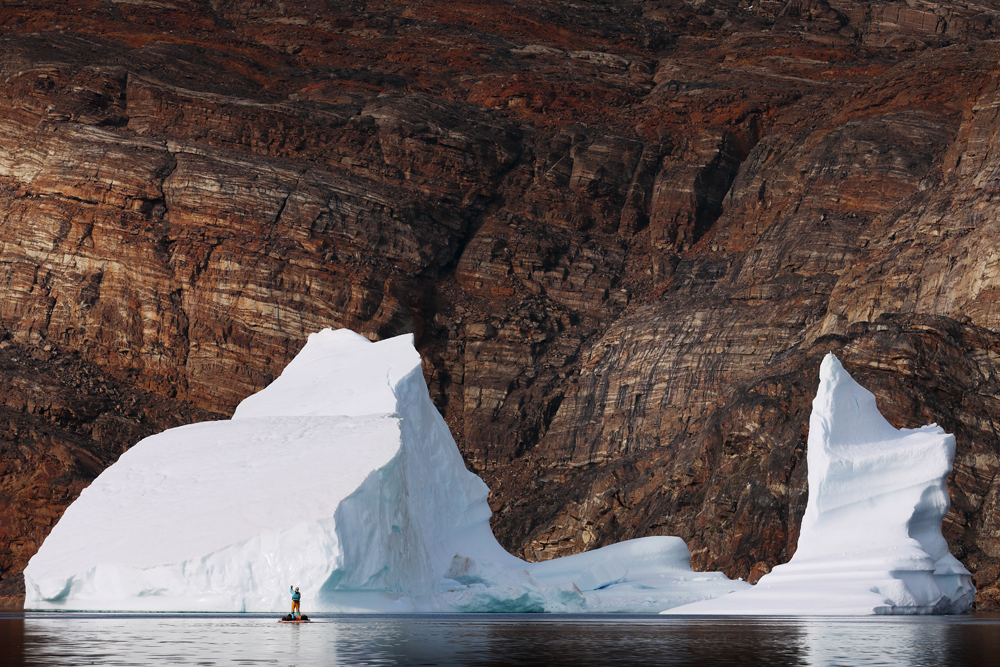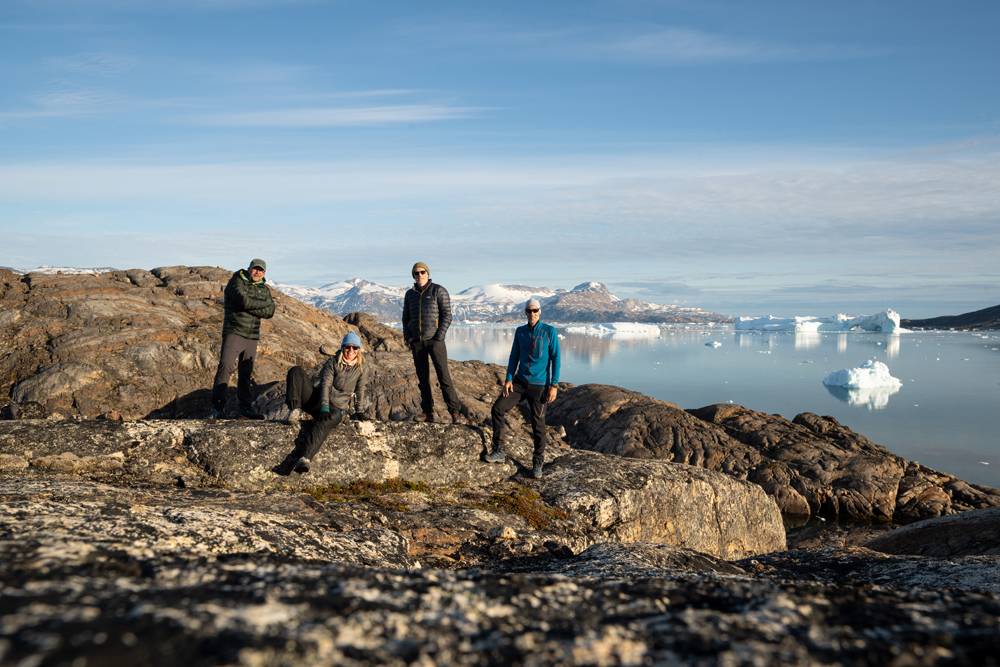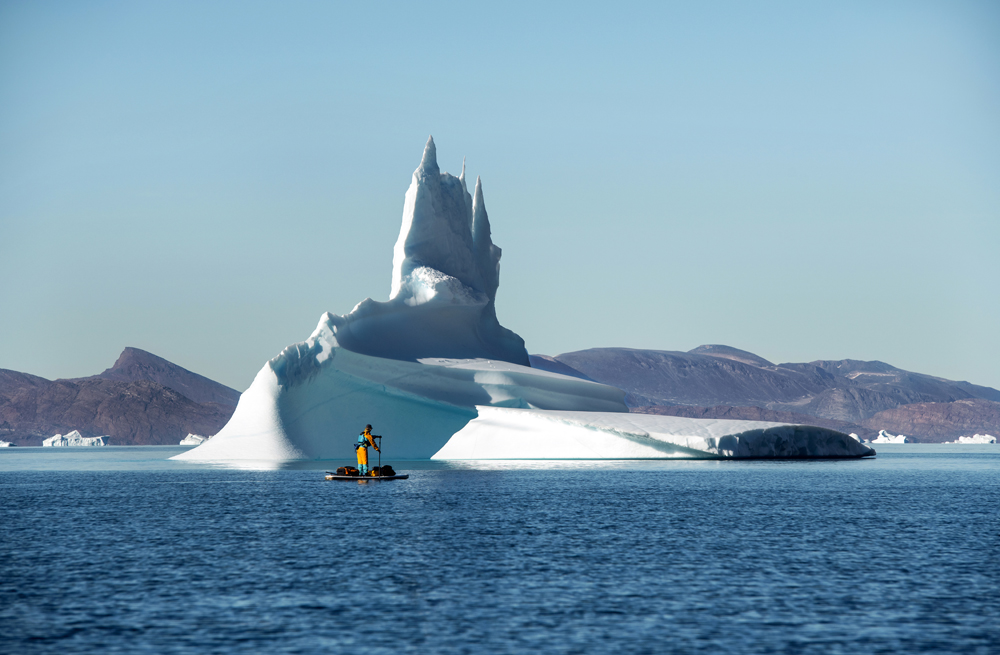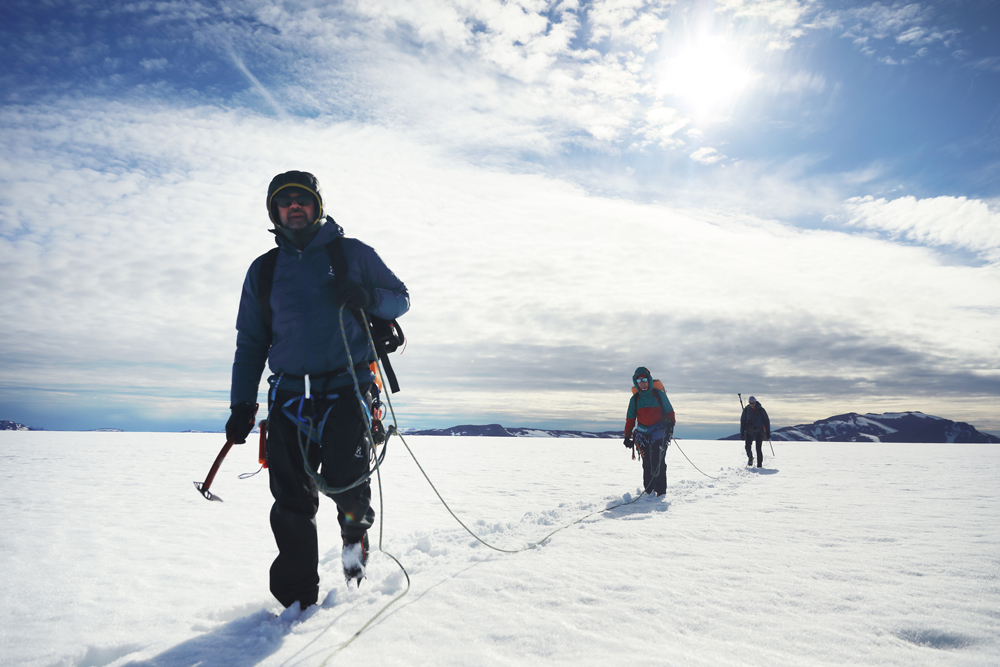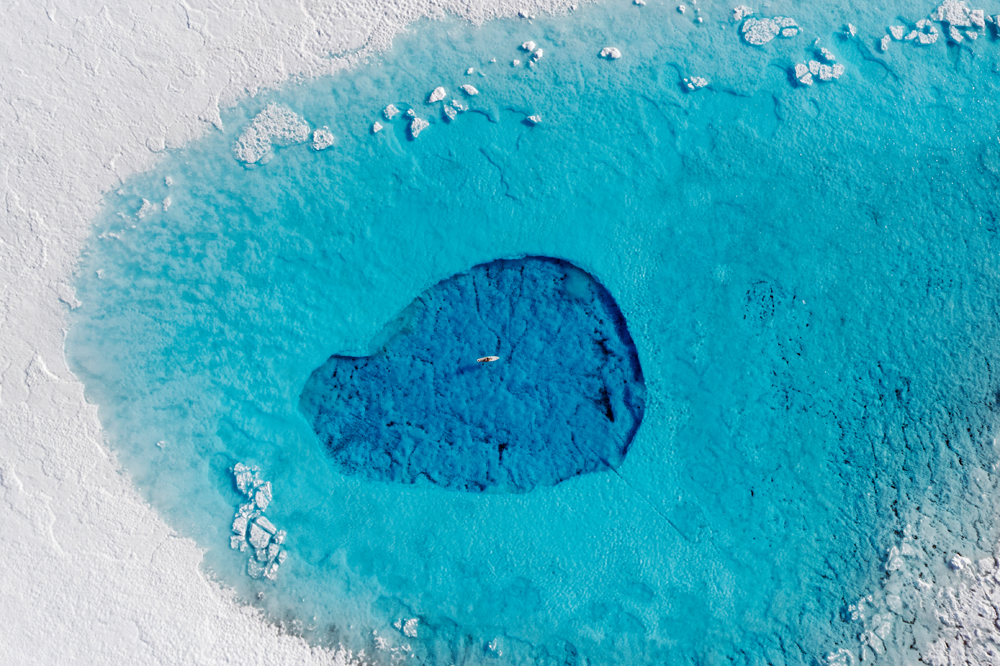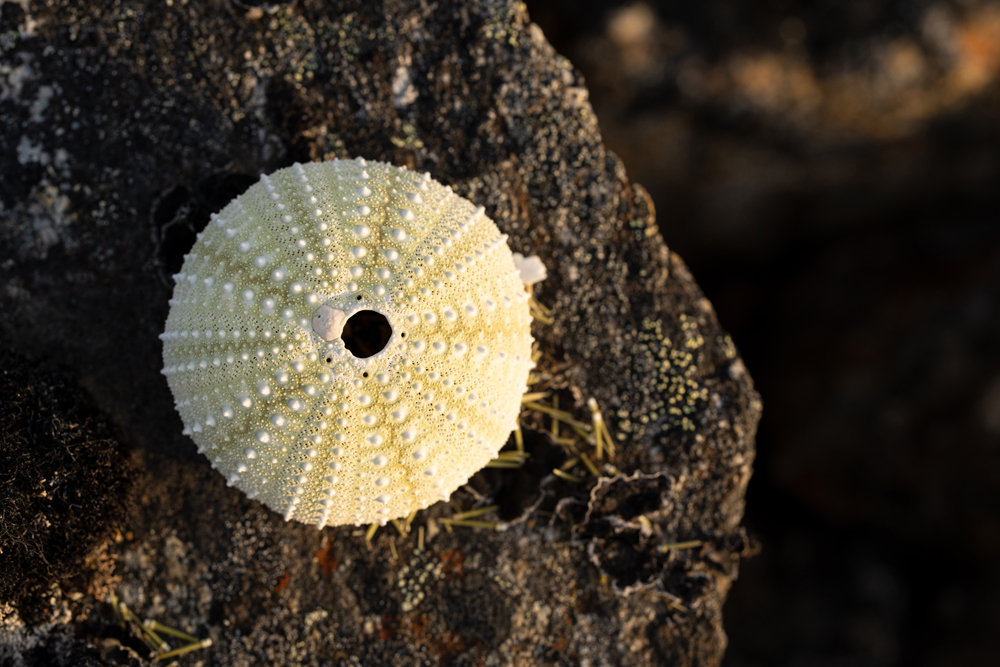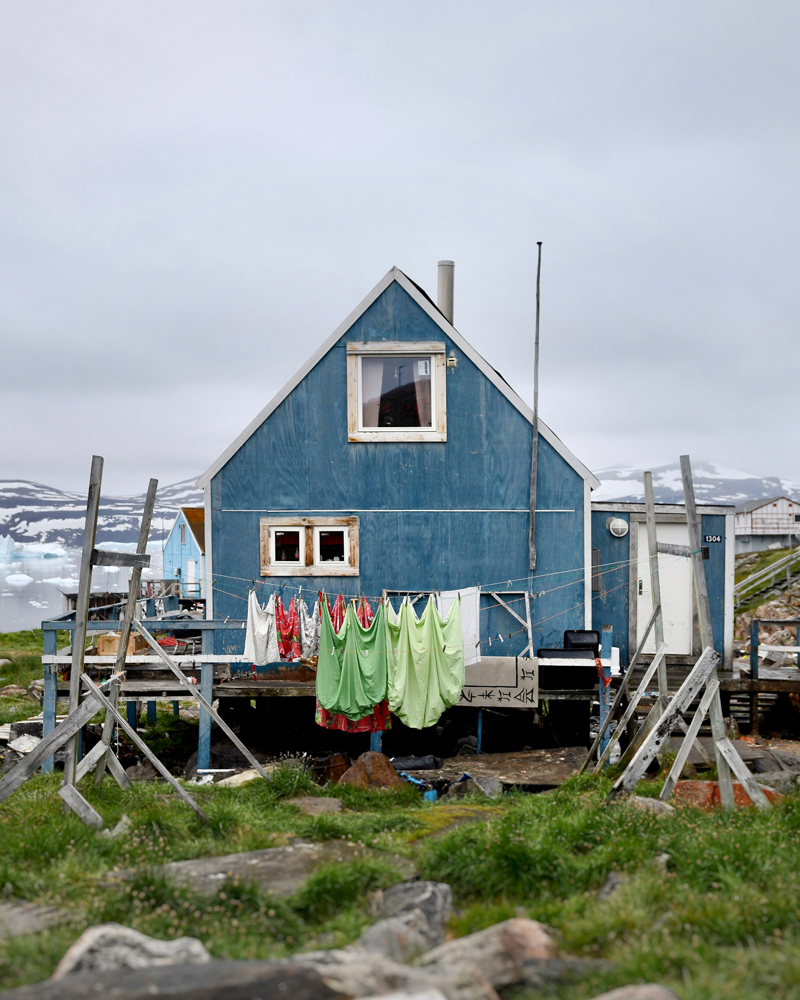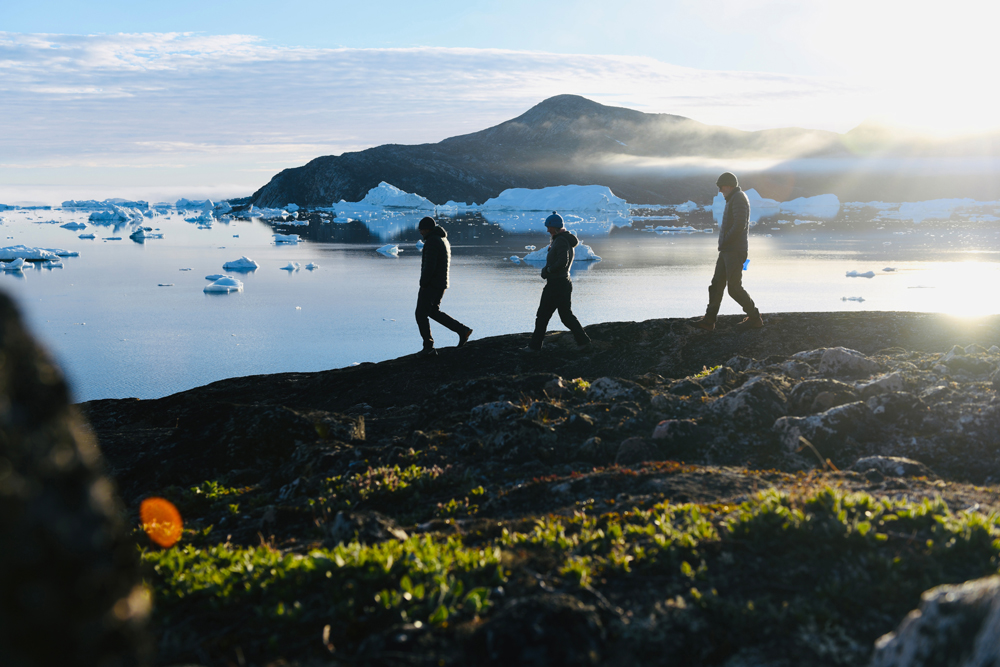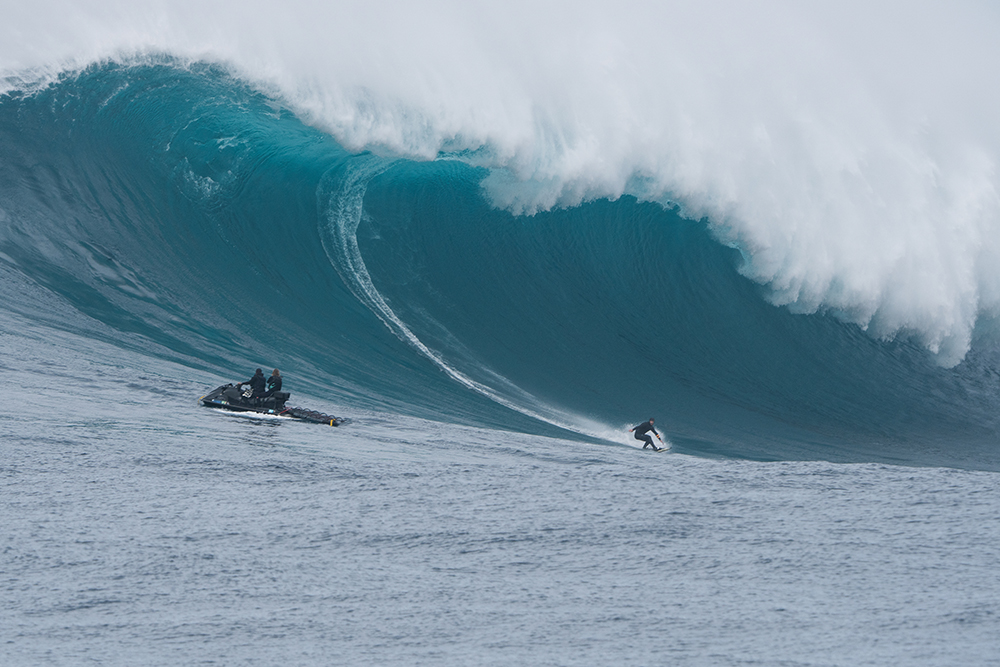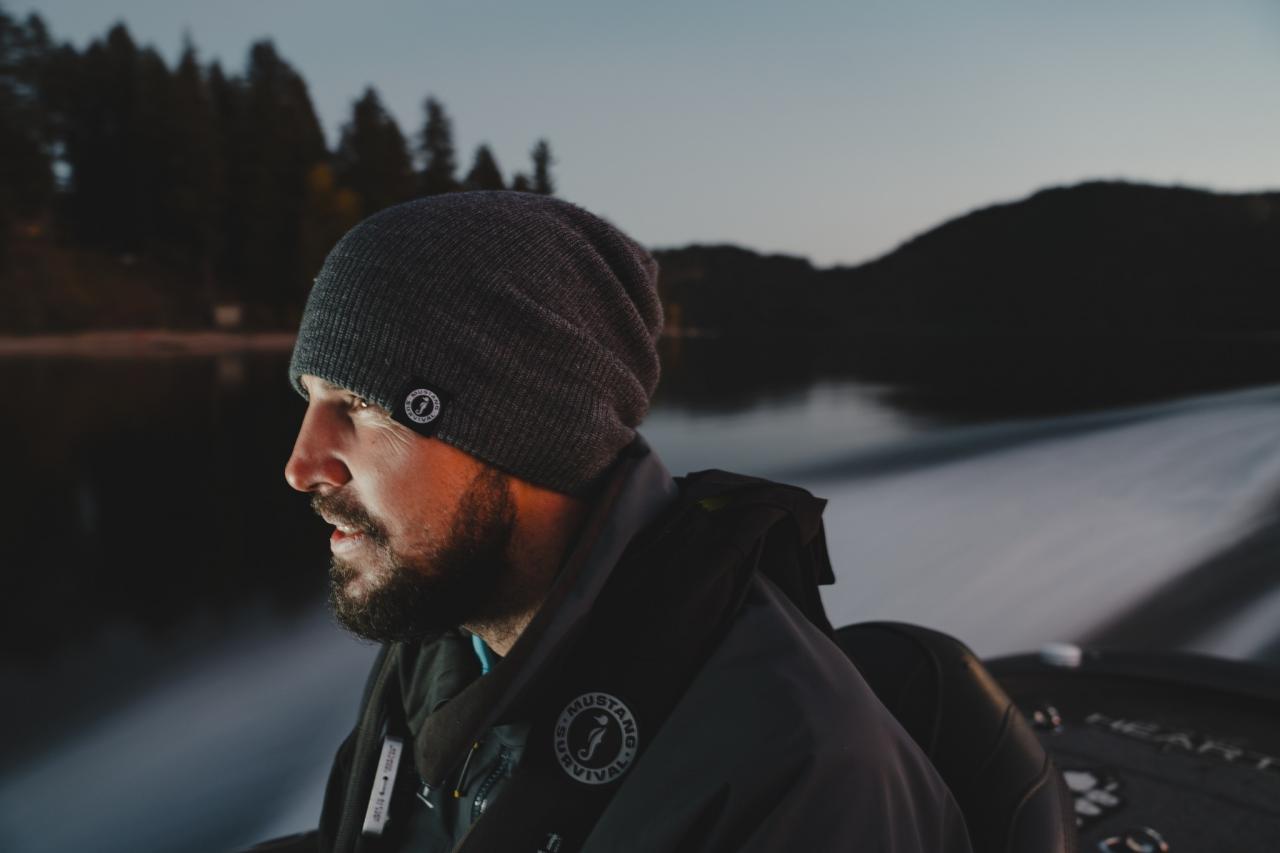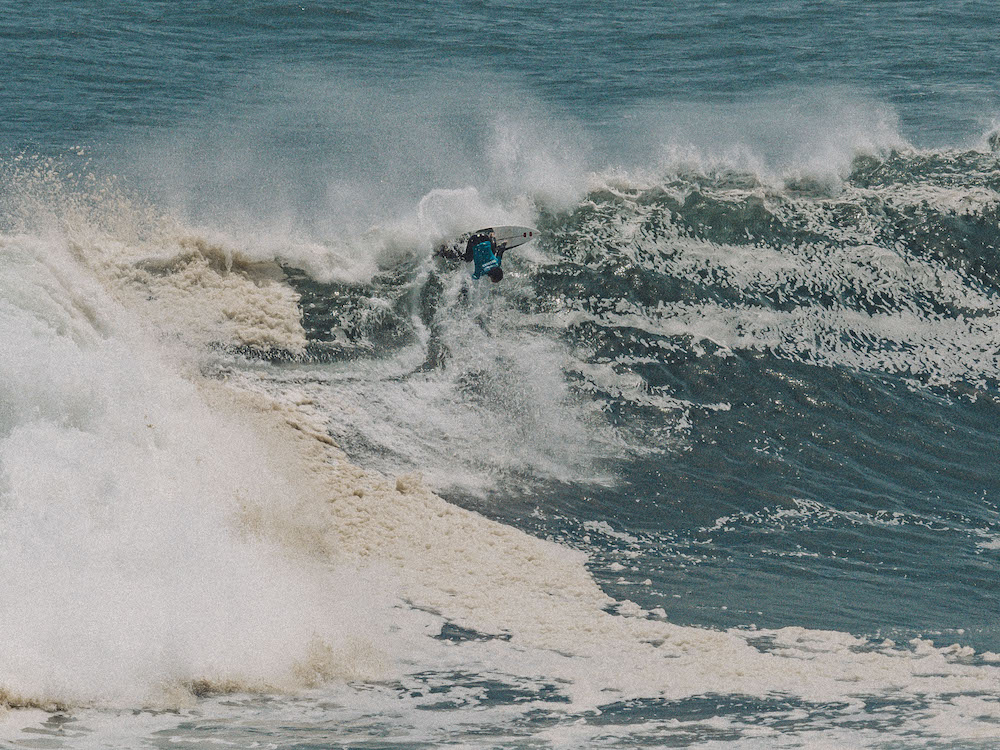I stare up at the never ending slope of ice looming large in front of us, trying to determine if I have a good or bad gut feeling. I seem to have no feelings at all. As we tie into our harnesses, I find myself rubbing the tiny brown toy horse I am carrying in my pocket belonging to my nephew. I am used to assessing risk, especially out on the water butI am not familiar with assessing risk on ice and the uncertainty is daunting. We are so very remote, add in the real risk of encountering both crevasses and moulins and there is no room for error.
The ground crunches beneath our crampons as we begin the climb, one step at a time. At the crest of this hill I stop and scan the horizon, allowing myself to take in what is in front of me: a plateau of white, only ice and snow as far as the eye can see. Vast, pure, and unlike anything I have ever experienced.
When we reach the lake it is breathtaking. We stop. We are really here. After years of planning and hoping, it now lies in front of us, magnificent in its azure tranquility. Here for maybe only a moment, is this moment.
We are more than halfway through our Greenland adventure, paddleboarding 450 km, self-supported, from Upernavik to Kullorsuaq.
I’ve never responded to a personal advert before, certainly not one from 3 male photographers looking for a woman to join them for a month-long excursion in a far flung country, camping. I can’t even get my head around internet dating.
It read:
“4 weeks on an SUP in Western Greenland, paddling around 25 km a day (8+ hours). Glacier climbing experience is an advantage”.
I didn’t really think I stood a chance, but by March I had been selected. May marked our first in-person meeting, a weekend spent paddling and completing glacier rescue training. Suddenly it’s July and we are in Copenhagen airport awaiting our 2nd of 4 flights to get us to the start point.
Greenland is the world’s largest island, 2.16 million square kilometers (836,330 square miles), population 56,000. There are no roads or railway systems here. It's the land of the dog sled, the kayak, snowmobiles, fishing boats; a land where the polar bear still reigns supreme. Funny how within 24 hours you can go from luxuriating in a hot shower in a cosmopolitan capital city to standing in a small kiosk in a 1000 person town that’s situated in the 72nd parallel, discussing ammunition with 3 blokes you’ve been away with once.
For the guys this trip was three years in the making. In 2021, a mere five days before departure, COVID canceled all flights. A dream that had been on the horizon for a while for both Justin and Jean-Luc, two members of Planet Visible, a photography collective whose ambition is to venture to remote places and to explore, document, and share what they find. Pascal Richard is the third member.
Using only our SUP’s for transport, the first 14 days have seen us traveling north, weaving our way through the almost entirely uninhabited Upernavik archipelago carrying all our kit, all 230+kg of it, and wild camping as we go.
We paddle consistently, needing only one rest day to hide from the aggressive 30 knot winds. Each day we cover between 20-30 km over a 7-10 hour period, only stopping to take pictures (for the guys) and to munch on snacks (mostly me). Camaraderie is strong and I start to build a bond with each of them. Conditions can be intense, the water temperature is just above 0 degrees, so falling in is not an option. Even a small injury out here could carry serious consequences. The wind is variable and with frustrating regularity not on our side, and the paddling at times is a real struggle.
I won’t forget on our very first afternoon, while rounding Upernavik we beat through treacle-like water for over 3 hours into an aggressive headwind. As I dug my blade into the choppy blue/grey waves with all my might, feet wide, fighting not to be turned left or right, I cursed and wondered how on earth I was going to get through a month’s paddleboarding if it was going to be like this. In fact, I wondered why I was on a paddleboard at all and why I needed to do these ridiculous things to feel good about myself. But sure enough, with some freshly caught cod in my belly, and a good night's sleep under the remarkable midnight sun, in the morning I was ready for another round and we continued to enjoy the magnitude of where we are.
And where we are feels out of this world! The ice takes center stage in this Tolkienian play of life. Each day brings a new kingdom of frozen shapes to marvel at. Crumpled towers and gnarled spears rise up out of the dark blue depths, dwarfing us. Huge slabs larger than stadiums surround us. Paddling between them becomes akin to a game of grandma’s footsteps, wanting to get ever closer to fully appreciate their scale and proportions, but never too close to witness the sudden, thunderous effects of their demise.
For me it’s the sounds they make that are also unforgettable. They breathe, they drip, they yawn and groan. The booming thunder-like rumble that echoes between the landmasses warns you that nature's greatest shapeshifters are collapsing nearby. Or the loud staccato ‘crack’ announcing an almighty chunk is plunging into the water below, initially causing a meters high wave that mercifully disperses quickly. When this happens, often the shards of debris fizz and crackle like rice krispies. Unpredictable beasts, they lean and lurch, tipping and turning at a moment's notice. Not all the icebergs are ferocious giants on our route. We cross a number of 7 km wide fjords entirely full of shattered ice, solid meaty lumps of every shape and size that we must push our way through to get to the other side, always trying to avoid the ones that look likely to tip, dip, roll or fall over. At times like this our polar bear jokes are made with more regularity; I join in as I nervously scan the sea of drifting ice, mush mush.
And now we're standing 600m above sea level, alongside this supraglacial lake on the Greenland ice sheet full of awe, excitement, and wonder. This is the other half of the dream, to trek up onto the ice sheet (hence the inflatable boards not kayaks), to find one of the largely unknown melt water lakes. In the summer they appear on the surface, reaching kilometers in diameter and several meters in depth. Their formation is driven by temperature, topography and elevation, and they can store vast amounts of fresh water. They are elusive because they can drain in a matter of hours or they can last for months. Unsurprisingly, their increased presence is linked with climate change.
There it is - it sits nestled in the snow with only a small ripple-like stream at one end, snaking its way along as it searches for its way out into the depths below. We stand looking at it at what we decided was a safe distance from the edge, analyzing what appeared to be a large, ominous dark blue speech-bubble-shaped circle sitting in the middle of the lake.
“Does anyone want to try and go out onto the lake?” Jean-Luc asks tentatively.
“I’ll go,” I said.
It was instinctive. We had come all this way, climbed up all this way. It was their dream, and I’m not a photographer, so it made sense for it to be me. I strode towards the lake carrying my paddleboard, sinking comically with every giant pantomime step into the deep slush and ice, thigh high in places. I continued to eye this curious cobalt opening resting at the bottom of the lake like a cavernous sinkhole.
I reach the edge and automatically clamber onto the board and push off. Slowly, I draw my blade through the serene water below me. The sun broke through the clouds, and I was struck by the electric energy that coursed through me. I must be the luckiest person in the world, I thought. A spiritual moment for me, this was one of those moments that I know will shape my life.
We descend back down, jubilant. The terrain is tough going, with a number of challenges including a river to cross, giant boulders to scramble over, soggy moss to sink into, and loose rocks under our feet - it’s a constant battle not to stumble, skid, slip, or roll an ankle. I’m looking forward to getting back to paddling.
The final week we journey north through more ice and rocky islands which were now getting snowier and steeper. Our days have become automatic: packing up camp, reluctantly writhing into our banana coloured drysuits and sodden booties, loading up the boards before pushing out for another spectacular day ahead.
Twice we have our paths blocked by the sheer volume of pack ice and have to re-route around peninsulas, adding more miles and causing us to face open ocean on one side. The terrain, always a mixture of lichen, slick rock and now snow capped peaks, is barren and unforgiving. It’s impossible not to be humbled by the sheer remoteness of where we are.
Disappointingly we see no whales. We do see (and occasionally startle) many ducks and ducklings, plenty of birds including the northern fulmar, and towards the end of our trip arctic terns, like beautiful big white swallows that would duck and dive around us. A memorable interaction was with a sleeping seal. Jean-Luc and I paddled right up against him believing he was dead. Then we saw a couple of bubbles emerge. Shocked and startled, his big eyes about to pop out of his head, he shot into the sanctuary of deeper water.
The only people we encountered on the water were fishermen searching for a seal to shoot or to fish for halibut, often on lines as long as 500m. Earlier on in the trip we came across some young fishermen from the small town of Nuussuaq, a town of less than 200 inhabitants that we would later visit after 20 days out on the water. Their English was really impressive. When we asked one of them where they'd learned it, his response was, “From YouTube and movies, I love Dark Knight!”. Amazing to think how much the internet has changed, and continues to change, our world.
Greenland is a land of extremes. Of either endless daylight or months of darkness. Of ice and snow, cold and even colder. The great paradox of being out here in this frozen wilderness is that what could kill you is what also keeps you alive. Environments like this sharpen your synapses, and remind you that our brains are hardwired to help us survive. You’re forced to measure risk versus reward every day. This hostile land keeps us alert and ignites that fire in our bellies. It’s the addictive side of getting out of your comfort zone, the true thrill of enduring the elements while being able to experience one of the most remote places on earth. We choose to do this.
We paddle into Kullorsuaq, subdued and happy to be here. It’s the northernmost settlement in the Upernavik archipelago, founded in 1928, and remains one of the most traditional hunting and fishing villages in Greenland, with around 450 inhabitants. As we stand on the heliport, all packed up, awaiting our flight back to Upernavik, we’re told the helicopter isn’t coming any more. Later we learn from the pilot that he was a mere 10 km away, however thick fog meant landing was impossible. We remain for 4 further days waiting to begin our journey home, never with any certainty when our trip would be over. It was an exercise in patience for all of us. A lesson in control for me, and how much we are used to having it in our daily lives. Here you are second to nature. The landscape and the elements dictate and shape your life, you are small and insignificant.
And that’s why I replied to the advert, and why I need the challenge of a trip like this. To allow myself to feel that my energy is being completely used. To quiet the deafening clamor of everyday life, to find stillness, to switch off the noise we don’t need.
Early on in our trip Jean-Luc mentioned a proverb his father used to say: “It’s better to know where you are without knowing where you’re going, than to know where you’re going without knowing where you are.”

